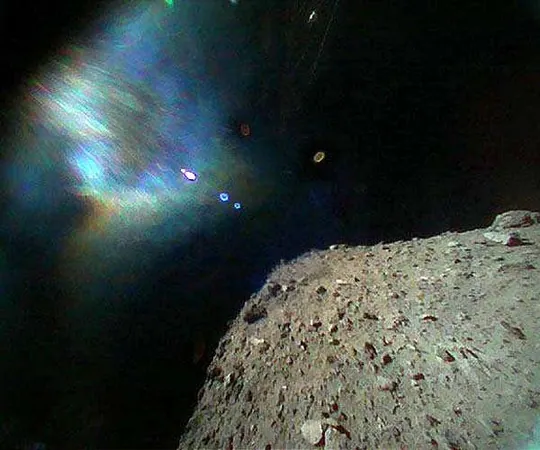
Revolutionary Quantum Research Set to Transform Optical Memory Storage
2024-10-02
Author: Mei
Overview
In an era where our digital lives generate an estimated 2 quintillion bytes of data every single day, the demand for efficient and innovative data storage solutions has never been greater. Traditional optical storage methods, like CDs and DVDs, are quickly becoming obsolete due to their limitations, primarily defined by the diffraction limit of light. However, groundbreaking research conducted by scientists at the U.S. Department of Energy's Argonne National Laboratory and the University of Chicago's Pritzker School of Molecular Engineering promises to revolutionize optical memory storage.
New Memory Technology
This new research explores the feasibility of a novel memory technology that transfers optical data from rare-earth elements embedded within solid materials to nearby quantum defects. Published in Physical Review Research, the study unveils the fundamental physics behind this cutting-edge optical storage method, which could potentially lead to high-density and energy-efficient memory devices.
Research Insights
Lead researcher Giulia Galli, a prominent figure at Argonne and a professor at PME, emphasizes the importance of quantum mechanical theories in approaching these pioneering technologies. "We worked out the basic physics behind how the transfer of energy between defects could underlie an incredibly efficient optical storage method," she explains.
Wavelength Multiplexing Technique
The study introduces an innovative approach—wavelength multiplexing—where multiple rare-earth emitters, each optimized for slightly different wavelengths of light, are embedded within the storage material. This technique proposes that the increased variety of wavelengths can bolster data density, ultimately allowing more information to be stored in a constrained area compared to existing methods.
Theoretical Models Development
To validate their theory, Galli and her team meticulously charted the physics necessary for effective and compact optical storage. They developed theoretical models featuring narrow band rare-earth emitters. These emitters can absorb light and subsequently re-emit it at very specific wavelengths, with the research demonstrating their potential to deliver energy to nearby quantum defects efficiently.
Understanding Energy Transfer
Using advanced first-principles electronic structure theories in tandem with quantum mechanics, researchers have made significant strides in understanding the intricacies of energy transfer processes in nanometer-scale interactions. “We wanted to develop the necessary theory to predict how energy transfer between emitters and defects work,” said postdoctoral researcher Swarnabha Chattaraj. “That theory then allowed us to figure out the design rules for potentially developing new optical memories.”
Quantum Defects and Spin States
A key finding of the study indicates that quantum defects, when stimulated by nearby narrow band emitters, not only absorb this unique energy but also undergo a spin state transition. This is crucial because the altered spin state stays stable for longer durations, potentially enabling these defects to function as reliable long-term data storage solutions.
Broader Implications
As Guha notes, the scientific community is just beginning to understand the implications of these near-field energy transfer dynamics, which differ from the established far-field processes. The promise shown by this quantum-enhanced optical storage not only addresses pressing storage limits but also opens up avenues for innovative applications in various sectors, from big data analytics to advanced computing.
Conclusion
In summary, this exciting research represents a significant step towards developing a new era of ultra-high-density optical memory storage, paving the way for technological advancements that can handle our ever-growing data consumption demands. Will this breakthrough revolutionize the way we store information in the digital age? Only time will tell, but this development certainly holds the key to a smarter, data-rich future.





 Brasil (PT)
Brasil (PT)
 Canada (EN)
Canada (EN)
 Chile (ES)
Chile (ES)
 España (ES)
España (ES)
 France (FR)
France (FR)
 Hong Kong (EN)
Hong Kong (EN)
 Italia (IT)
Italia (IT)
 日本 (JA)
日本 (JA)
 Magyarország (HU)
Magyarország (HU)
 Norge (NO)
Norge (NO)
 Polska (PL)
Polska (PL)
 Schweiz (DE)
Schweiz (DE)
 Singapore (EN)
Singapore (EN)
 Sverige (SV)
Sverige (SV)
 Suomi (FI)
Suomi (FI)
 Türkiye (TR)
Türkiye (TR)